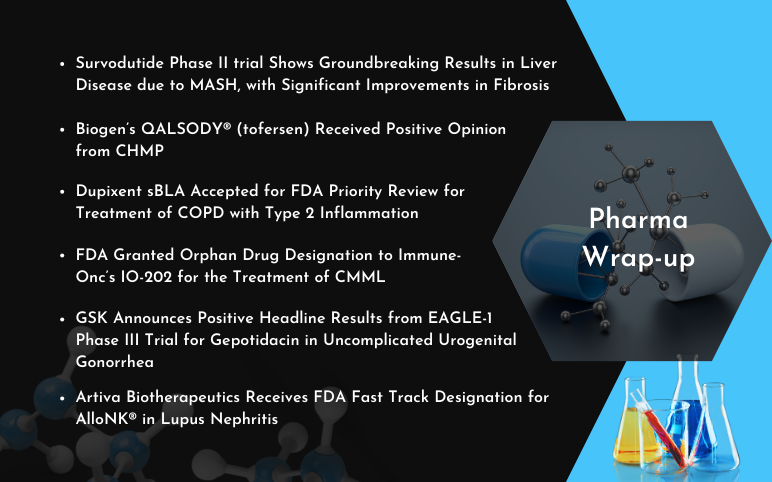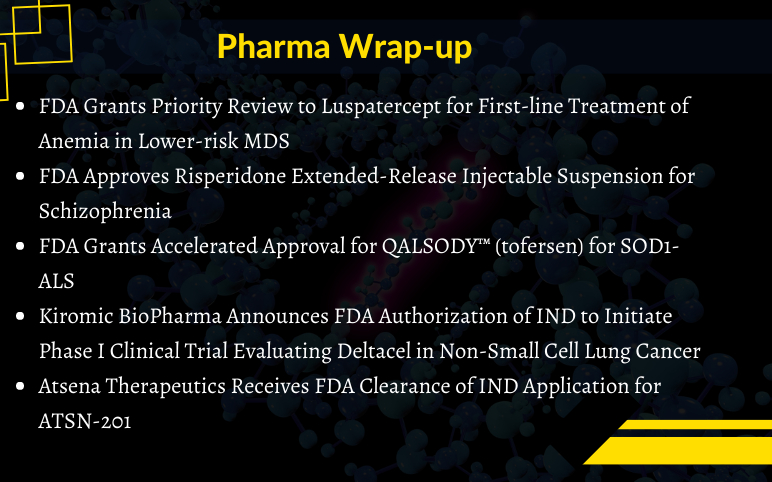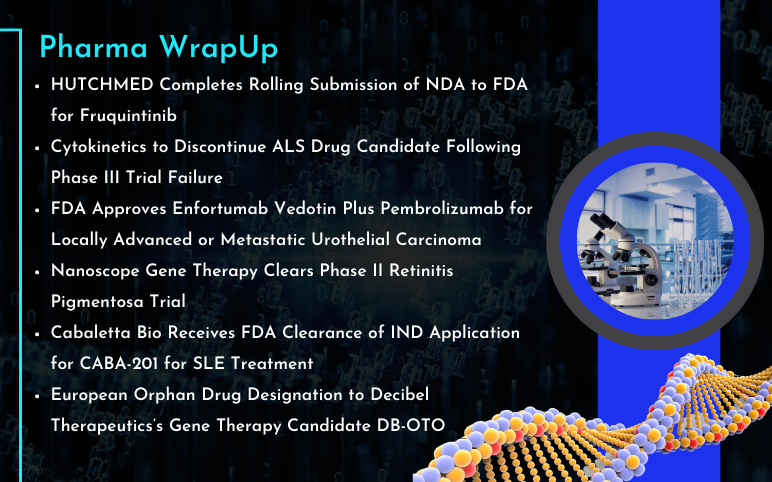Amyotrophic lateral sclerosis (ALS), commonly known as Lou Gehrig’s disease, is a group of rare neurological diseases that mainly involve the nerve cells (neurons), responsible for controlling voluntary muscle movement. The disease progresses over 3–5 years, making voluntary movements of arms and legs impossible. It is the most common form of motor neuron disease in adults. As per DelveInsight, it is estimated that the diagnosed ALS prevalent cases in the 7MM (the US, EU5, and Japan) is estimated to be 48,112 in 2020. Moto neuron diseases, although has a low incidence or prevalence rate, can cause serious disability and are associated with a high fatality rate.
However, the last decade has experienced a substantial increase in the burden of motor neuron disease. Even then, there exists no cure for the disease. The available treatment options help control the symptoms and prevent unnecessary complications.
Therefore, there is a need for curative therapies. Amyotrophic lateral sclerosis pipeline is quite vast with potential competitors including Cytokinetics, Orphazyme, Orion, Brainstorm Cell Therapeutics, Biogen, AB Science, Ionis Pharmaceuticals, Clene Nanomedicine, Neurosense therapeutics, Amylyx, Immunity harma, MediciNova, Biohaven Pharmaceuticals, and others. The current emerging ALS therapies have focused on opting several different mechanisms of action, namely, Heat Shock Factor 1 (HSF 1) activation (Arimoclomol), SOD1 inhibition; Antisense therapy (Tofersen), Calcium sensitization (Levosimendan), Enhanced neurotrophic factor secretion (NurOwn), Tyrosine kinase inhibition (Masitinib), Complement C5 inhibition (Ultomiris, Zilucoplan), Myeloperoxidase (MPO) inhibition (Verdiperstat), Inhibition of phosphodiesterases (PDE) 4 and 10 (Ibudilast), Kv7/ KCNQ potassium channel activation (Ezogabine), and several others.
Some of the top emerging pipeline therapies that have the potential to make an impact on the Amyotrophic lateral sclerosis market size growth in the next decade are as follows:
- Radicava (Edaravone)
Company: Mitsubishi Tanabe Pharma
Phase:
MoA: Free radical scavenger
Why it seems to be promising?
Radicava’s (Edaravone) IV infusion therapy approval has been a turning point for the ALS market, as it was the second drug approved after more than 2 decades of the first drug Riluzole’s approval. Based on analysis from several real-world pieces of evidence, the drug has proven to be beneficial on a subset of patients with early-stage probable or definite ALS. Presently, Radicava is marketed in the US and Japan in addition to the gold standard of care for ALS treatment, that is, Sanofi’s Rilutek (riluzole) along with its generic versions. The drug is not yet approved in the EU5 countries. As per DelveInsight’s analysis, although Radicava did offer hope for people with ALS by slowing the loss of physical function, patient compliance has remained a bit lower due to the IV infusion, which may require hospitalization in 50% of the patients. This unmet need is expected to overcome with the launch of an oral formulation of edaravone in the coming 2-3 years, which is expected to increase patient compliance, lesser side effects along a lower annual cost of therapy.
- Tofersen/ BIIB067
Company: Mitsubishi Tanabe Pharma
Phase: III
MoA: SOD1 inhibitor; Antisense therapy
Why it seems to be promising?
Currently, Tofersen is the only drug facing no competition in the ALS market as it is specifically targeting SOD1 mutation, which has not been considered as a target by any of the current or emerging therapies so far. Furthermore, positive results with minimal safety issues may also prove to be a contributing factor for its success upon approval. Considering the unmet need for SOD1 mutation, the drug is expected to launch by 2022 with a high probability of success to enter the market.
- Arimoclomol
Company: Orphazyme
Phase: III
MoA: Heat Shock Factor 1 (HSF 1) activator
Recently, FDA has accepted orphazyme’s NDA application of Arimoclomol for Neimann Pick type C. This drug has received Fast Track and Orphan Designation and is now in phase III stage of development for ALS. Although not powered for therapeutic effect, the consistency of results across the range of prespecified efficacy outcome measures suggested a possible therapeutic benefit of arimoclomol clearly indicated its potential in treating ALS as it increased the overall survival and functioning in ALS patients. The company expects to announce topline results from the clinical trial in the first half of 2021.
- Ultomiris (ravulizumab)
Company: Alexion Pharmaceuticals
Phase: III
MoA: Complement C5 inhibitors
Why it seems to be promising?
Ultomiris is the first and only approved long-acting C5 complement inhibitor for the treatment of adults with paroxysmal nocturnal hemoglobinuria (PNH) and atypical hemolytic uremic syndrome (aHUS). Currently, it is quite difficult to estimate the probability of success of this drug in ALS as the Phase III trial was initiated in March 2020 with no previous results in ALS patients. However, we believe that this drug’s entry might not impact the current standard of care (SOC; riluzole and radicava) much as the patients are allowed to take the SOC even during the trial enrollment.
- Verdiperstat (Part of HEALEY ALS Platform trial)
Company: Biohaven Pharmaceuticals
Phase: II/III
MoA: Myeloperoxidase (MPO) inhibitor
Why it seems to be promising?
Biohaven initiated a Healey ALS trial in July 2020, which is the first ALS trial that is investigating multiple treatments for ALS patients at once. If the company succeeds, it can accelerate the identification of more effective treatment options for ALS and might modify the current SOC. Verdiperstat is currently being evaluated in Phase II/III trial for ALS, as the drug has previously produced satisfactory results in other related neurodegenerative diseases such as Multiple System Atrophy, where it might receive its first approval.
- Zilucoplan (Part of HEALEY ALS Platform trial)
Company: UCB Pharma
Phase: II/III
MoA: Blocks the cleavage of complement C5 into C5a and C5b
Why it seems to be promising?
Zilucoplan is a part of the HEALEY ALS platform trial. The Phase II/III trial initiated in July 2020, and as per Ra Pharma, there is substantial data supporting the role of central and peripheral complement activation of this drug ALS. Although the probability of success may still remain at a moderate level due to the lack of precise results from the HEALEY platform trials, Zilucoplan is a C5 complement inhibitor and it might prove to be an effective ALS treatment strategy considering that ALS is a complement-mediated disease.
- CNM-Au8 (Part of HEALEY ALS Platform trial)
Company: Clene Nanomedicine
Phase: II/III
MoA: Nanocatalysis
Why it seems to be promising?
This is the third and last investigational drug, which is a part of the HEALEY ALS platform trial apart from Verdiperstat and Zilucoplan. This drug is being investigated for newly symptomatic ALS patients and has been found to be effective in promoting motor neuron health, reduce neuron loss, and preserve motor neuron function in its preclinical results and it is currently being investigated in addition to the currently existing SOC.
- Trehalose (Part of HEALEY ALS Platform trial)
Company: Seelos Therapeutics
Phase: II/III
MoA: Stabilizes proteins and activates autophagy
Why it seems to be promising?
Trehalose has been a recent addition to the HEALEY ALS platform trial in December 2020. Seelos has initiated a registration Phase II/III trial for evaluation of Trehalose in ALS patients. The drug has been allowed to enter the registration study directly as the company has already worked extensively in identifying trehalose as a potential treatment to study in ALS based on previous early phase positive outcomes. The story remains the same for all 4 potential drugs, which are a part of the HEALEY ALS platform trial and are being evaluated in the last phase of the trial for a direct approval based on their positive outcomes in either early phase trials or in trials of related neurodegenerative indications.
- MN-166 (Ibudilast)
Company: MediciNova
Phase: II/III
MoA: Inhibitor of phosphodiesterases (PDE) 4 and 10 and an inhibitor of macrophage migration inhibitor
Why it seems to be promising?
Ibudiblast not just received a Fast track and Orphan Designation, the drug in adjunct with riluzole also increased the rate of response and improved survival based on results from a Phase II trial, however, results from the late-stage trial, which has recently initiated is much awaited for further analysis on this drug combination.
- AMX0035
Company: Amylyx Pharmaceuticals
Phase: II/III
MoA: Blockade of key cellular death pathways originating in the mitochondria and endoplasmic reticulum
Why it seems to be promising?
The drug not only met its primary endpoints successfully but also reduced the progression of lung function, the hospitalization rate of participants, and the rate of decline in muscle strength as per the latest findings from the trial till November 2020. These results clearly suggest that the drug has a high potential for treating ALS patients. Another fact that sets this drug apart from all the other emerging therapies is the fact that it is the only drug that is being investigated in children as well, thereby overcoming the unmet of an effective treatment for Children suffering from ALS, which is a small pool out of the total ALS patient pool.









-Agonist.png)


